 AKTI S
AKTI S DHAN
DHAN
Steps to Sam dhi
dhi
ALSO BY PANDIT RAJMANA TIGUNAIT, PhD
BOOKS:
The Pursuit of Power and Freedom: Katha Upanishad
Touched by Fire: The Ongoing Journey of a Spiritual Seeker
Lighting the Flame of Compassion
Inner Quest: Yogas Answers to Lifes Questions
The Himalayan Masters: A Living Tradition
Why We Fight: Practices for Lasting Peace
At the Eleventh Hour: The Biography of Swami Rama
Swami Rama of the Himalayas: His Life and Mission
Tantra Unveiled: Seducing the Forces of Matter and Spirit
Shakti: The Power in Tantra (A Scholarly Approach)
From Death to Birth: Understanding Karma and Reincarnation
The Power of Mantra and the Mystery of Initiation
Shakti Sadhana: Steps to Samadhi
(A Translation of the Tripura Rahasya)
Seven Systems of Indian Philosophy
AUDIO & VIDEO:
Sacred LinkTM Freedom from Fear Conference
The Quest for Freedom and the Sacred LinkTM
The Spirit of the Vedas
The Spirit of the Upanishads
Pulsation of the Maha Kumbha Mela
In the Footsteps of the Sages
Living TantraTM Series
Tantric Traditions and Techniques
The Secret of Tantric Rituals
Forbidden Tantra
Tantra and Kundalini
Sri Chakra: The Highest Tantric Practice
Sri Vidya: The Embodiment of TantraSteps to Sam dhi
dhi
A Translation of the Tripur Rahasya
Rahasya
by Pandit Rajmani Tiguniat, PhD
with an Introduction by Swami Rama

Himalayan Institute Press
952 Bethany Turnpike
Honesdale, PA 18431
www.HimalayanInstitute.org
1993 by Himalayan International Institute of Yoga Science and Philosophy of the USA
All rights reserved. No part of this book in any manner, in whole or in part, in English or in any other language, may be reproduced or transmitted in any form or by any means, electronic or mechanical, including photocopying and recording, or by any information storage or retrieval system without prior written permission of the copyright owner.
Second Printing 2008
ISBN-13: 978-0-89389-140-4
ISBN-10: 0-89389-140-1
Printed in the United States of America
The paper used in this publication meets the minimum requirements of American National Standard for Information SciencesPermanence of Paper for Printed Library Materials, ANSI Z39.48-1984.
LCCN: 93045897
Dedicated to The Mother alone
CONTENTS
The SPELLING and PRONUNCIATION of SANSKRIT LETTERS and WORDS
Sanskrit vowels are generally the same pure vowel sounds found in Italian, Spanish, or French. The consonants are generally pronounced as in English.
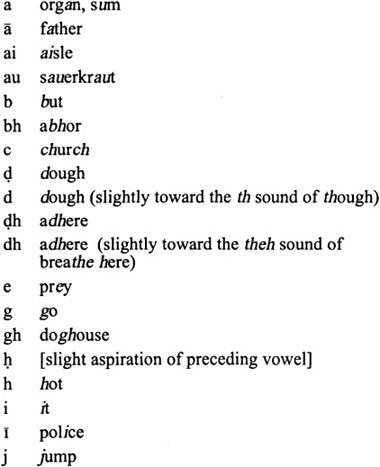
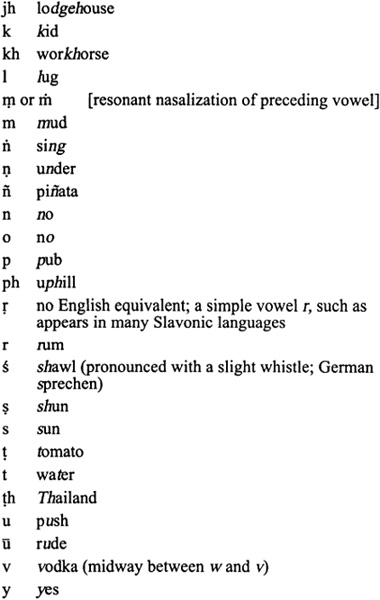
Vowels . Every vowel is either long or short. The diphthongs e, o, ai , and au are always long. Long a, i , and u are indicated by a horizontal line over the vowel. The long form of a vowel is pronounced twice as long as the short form.
Consonants . Sanskrit has many aspirated consonants, that is, consonants pronounced with a slight h sound: bh ch  h dh gh jh kh ph
h dh gh jh kh ph  h th. These apirated consonants should be pronounced distinctly. The retroflex consonants,
h th. These apirated consonants should be pronounced distinctly. The retroflex consonants, 
 h
h 


 h, are pronounced with a hitting sound, as the tip of the tongue is curled back to the ridge of the hard palate. The dentals, d dh n t th , are pronounced with the tip of the tongue touching the upper teeth.
h, are pronounced with a hitting sound, as the tip of the tongue is curled back to the ridge of the hard palate. The dentals, d dh n t th , are pronounced with the tip of the tongue touching the upper teeth.
Accentuation . There is no strong accentuation of syllables. The general rule is to stress the next-to-last syllable of a word, if that is long. A syllable is long if (a) it has a long vowel or (b) its vowel is followed by more than one consonant. If the next-to-last syllable of a word is short, then the syllable before that receives the stress.
INTRODUCTION
by Swami Rama
ALL HUMAN BEINGS EXPERIENCE the waking, dreaming, and sleeping states, but only a fortunate few, the yogis, attain the fourth state, called tur ya. These rare ones reach the summit and have a profound view of all states experienced by human beings.
ya. These rare ones reach the summit and have a profound view of all states experienced by human beings.
The aspirant who has attained such a lofty state is rare and knows the mystery of life here and hereafter. Nothing remains unknown to him. Such a great yogi does not belong to any caste, creed, sex, or ethnic group because he has already transcended all such superficial limitations. The knowledge that enlightens such an aspirant is called Tripur Rahasya.
Rahasya.
The text by that name is one of the most significant scriptures in the tradition of tantra yoga. Its beauty lies in the fact that it expounds the lofty knowledge of inner truth while systematically offering practical instructions on  akti s
akti s dhan
dhan . In
. In  akti s
akti s dhan
dhan , the aspirant learns to apply all of his resources to the task of awakening the dormant fire within and leading it to higher awareness, finally reaching the highest cakra , the thousand-petaled lotus. In advanced stages of practice, the aspirant knows all about his future, even in the next life. This is the glory of
, the aspirant learns to apply all of his resources to the task of awakening the dormant fire within and leading it to higher awareness, finally reaching the highest cakra , the thousand-petaled lotus. In advanced stages of practice, the aspirant knows all about his future, even in the next life. This is the glory of
Next page

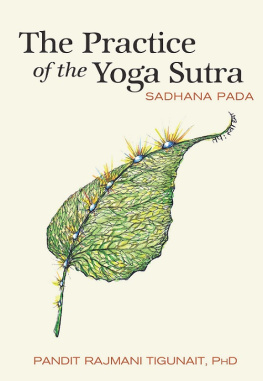
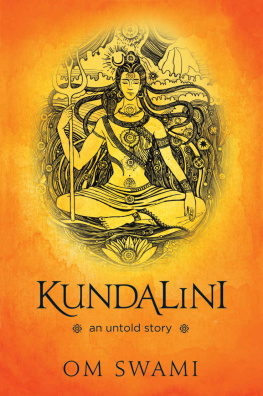

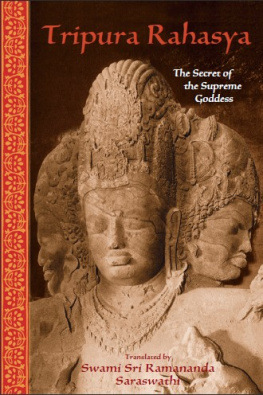
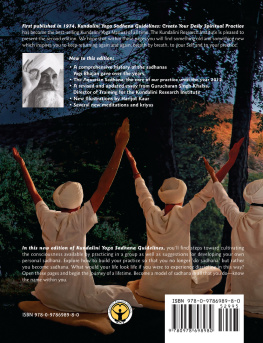
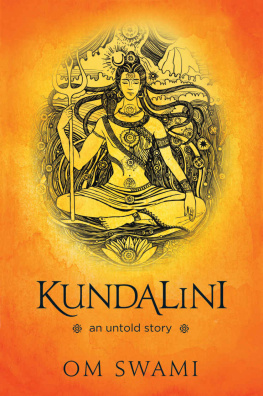
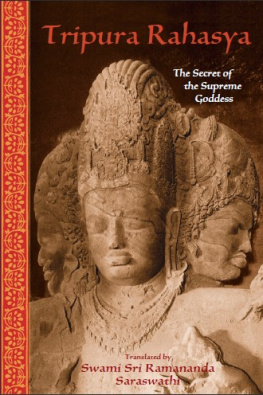
 AKTI S
AKTI S DHAN
DHAN dhi
dhi Rahasya
Rahasya


 h dh gh jh kh ph
h dh gh jh kh ph  h th. These apirated consonants should be pronounced distinctly. The retroflex consonants,
h th. These apirated consonants should be pronounced distinctly. The retroflex consonants, 

 ya. These rare ones reach the summit and have a profound view of all states experienced by human beings.
ya. These rare ones reach the summit and have a profound view of all states experienced by human beings. Rahasya.
Rahasya. akti s
akti s